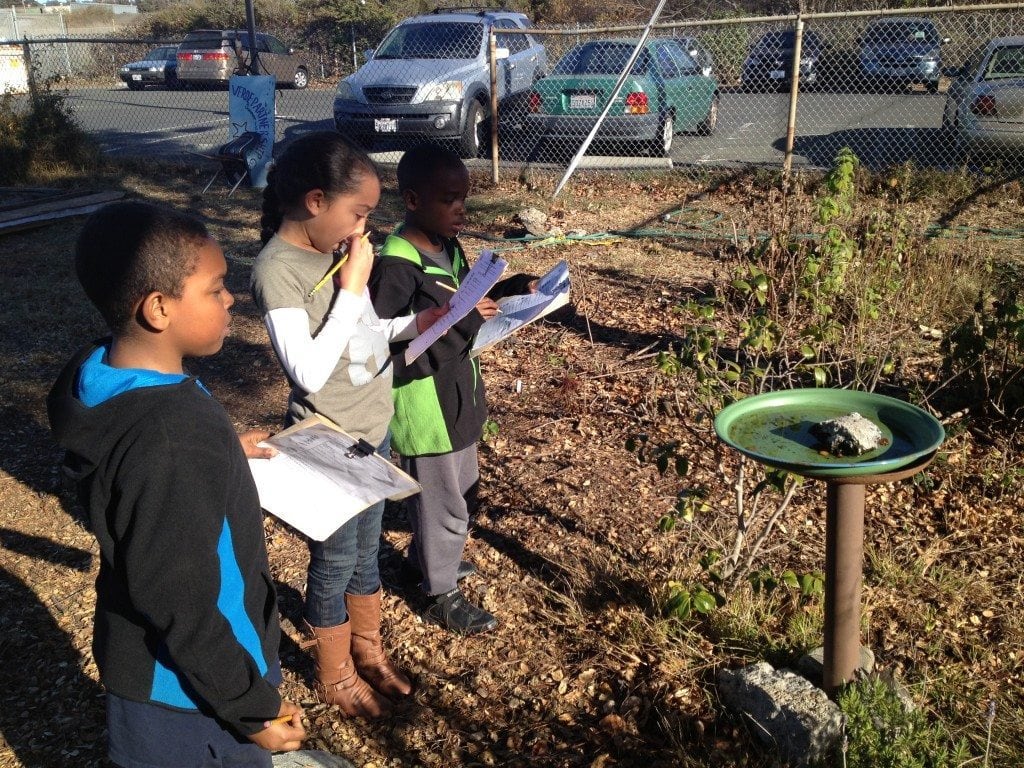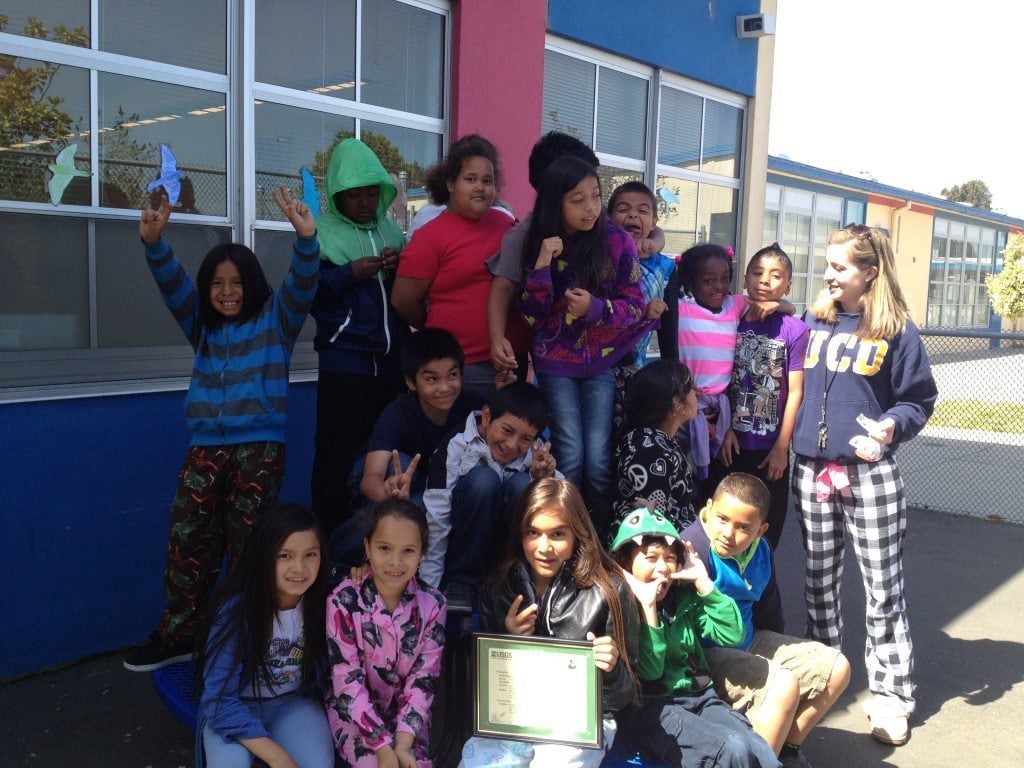A fallen sparrow spurs a bird-friendly schoolyard
By Anthony DeCicco
Imagine you are a Golden-crowned Sparrow. You hatched in 2013 on the shrubby lowland tundra of Middleton Island, about 80 miles off the coast of Alaska. You were banded on September 15 of the same year, and eventually you make your natural journey southward along the Pacific Flyway.
You stop along forest edges, shrubs, chaparral, and backyards for about 2000 miles until you come to the garden at Verde Elementary School in North Richmond, California. Its lush habitat is alluring, and you stop to rest in a Coast live oak. The view south looks promising as you fly quickly from the oak’s branches – but what appeared to be a sunny horizon and more trees turn out to be reflections from a large classroom window. You collide. The impact is too much, and flapping wildly, you fall and pass away at the base of the oak.
The third graders in our Eco-Education program found “Goldie” and noticed the tiny metal “ring” on its leg on January 10, during their initial schoolyard habitat survey. We reported details of the band to the U.S. Geological Survey, which sent the students a certificate with details of the bird’s banding:
“This record is actually quite unique and documents one of the longest movements for Golden-crowned Sparrow in our database.”
It is estimated that a billion birds die annually in North America as a result of window collisions like Goldie’s.
The children were both fascinated and sad. They wanted to help prevent future window strikes but were at a loss for solutions.
Fortunately their interest coincided with a pilot program GGBA had been starting to develop in Richmond this year – creating “Bird-Friendly Schools.”
GGBA Eco-Education staff helped the children create a flock of beautiful bird silhouettes and place them on school windows.

Next school year, these students can serve as advocates for other steps that would help transform Verde Elementary into a Bird-Friendly School, such as:
- Treatments on all key windows.
- More native flora habitat.
- Placement of monitored and appropriate feeders.
- Installation of nest boxes for Western Bluebirds, Chestnut-backed Chickadees and (possibly) Barn Owls.
- Advocating for a ban on pesticides and rodenticides and for adoption of a “lights out” policy on school grounds.
Elsewhere in Richmond, Eco-Education students at Lake Elementary were also busy taking bird-friendly action this year. During their initial schoolyard habitat assessment, they realized that what they thought were hummingbirds were actually Western Bluebirds — and their schoolyard was full of them!
With authorization from the West Contra Costa School District and help from GGBA bluebird specialist Rusty Scalf, the principal and students were thrilled to be a part of the Eco-Education Program’s first nest box installation program.
Almost as adorable as watching bluebirds use a nest box was watching these third-graders build them. So precious! First they screwed together pre-cut and pre-drilled pieces of wood, and then they worked collaboratively to attach the nest box to a ten-foot pole that was then strapped to a fence post next to their grassy playing field. They were very proud of themselves.
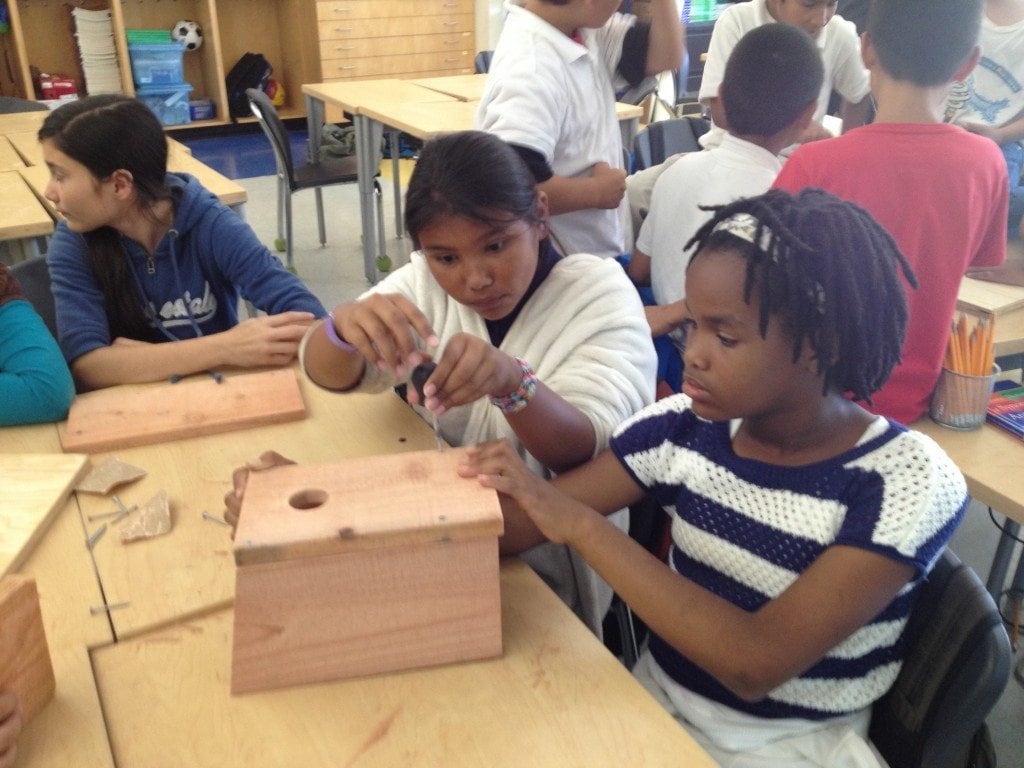
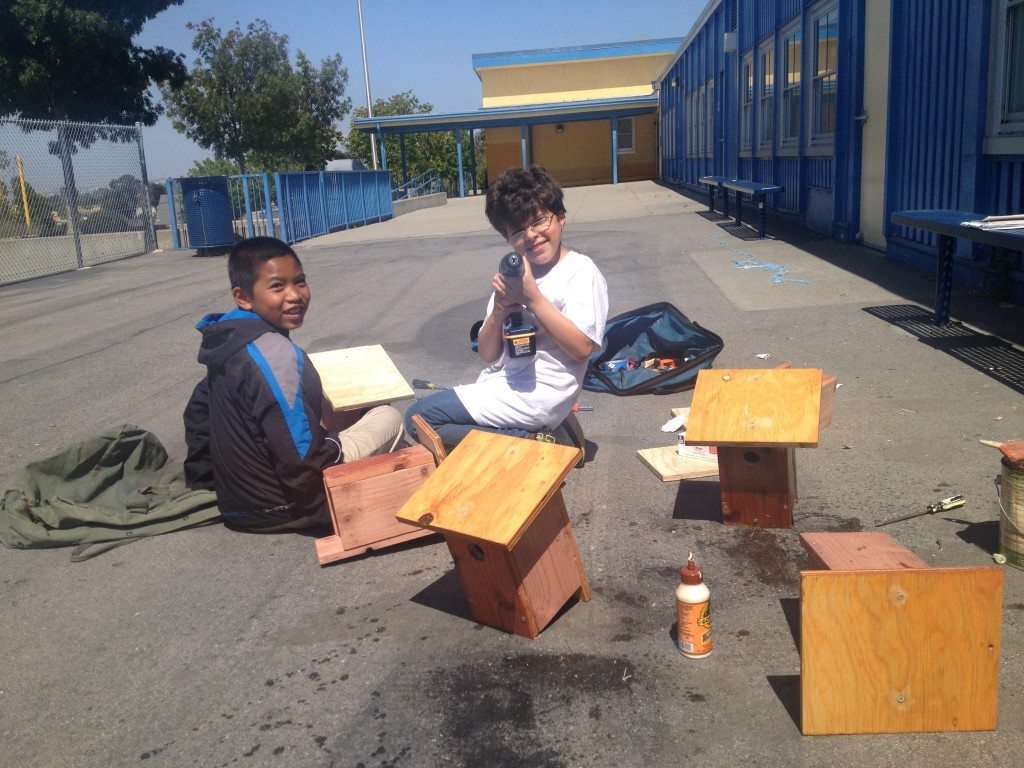

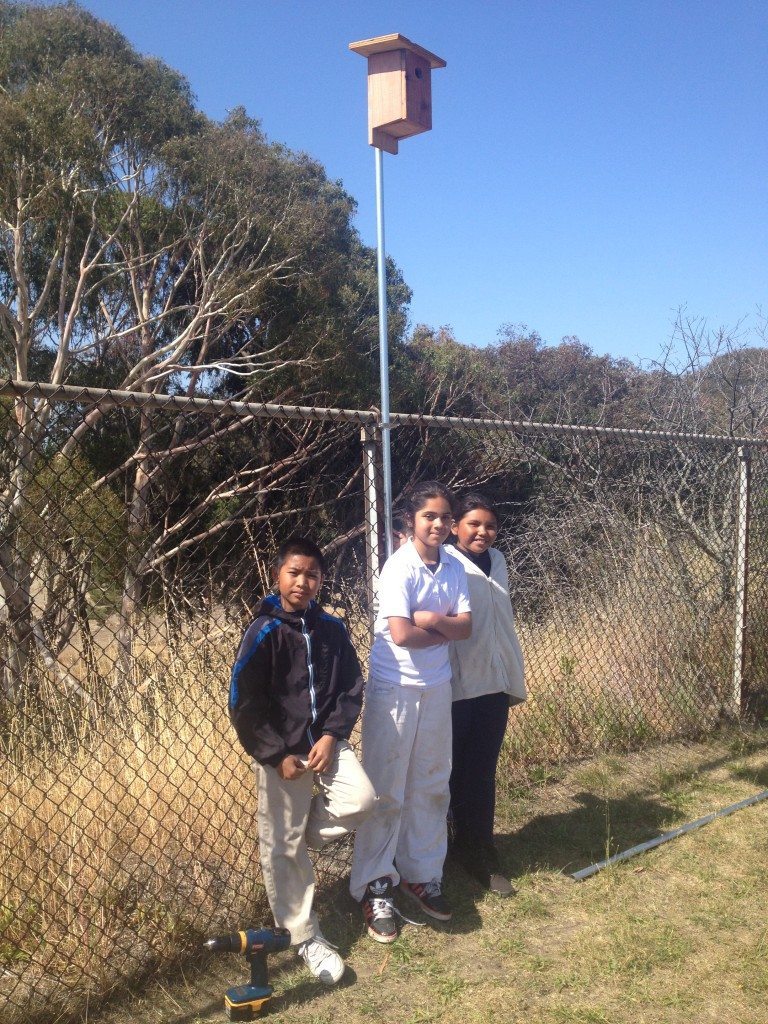
Next year’s flock of third-graders at Lake Elementary will erect two additional nest boxes there. Another task on their Bird-Friendly Schools checklist will be building new Barn Owl boxes to replace ones installed years ago by the school district for rodent control. We are set to go with box construction plans from the Hungry Owl Project.
Meanwhile, fourth-graders at Montalvin Elementary in Richmond got a head start on their Bird-Friendly School initiative last fall by planting hummingbird-attracting flora on their school grounds (featured in the winter 2014 edition of The Gull).
They followed with building Western Bluebird nest boxes as well — a total of eight! —and, like the Lake Elementary students, installed one along the fence line of their grassy field. When they return in the fall, they will install three more bluebird boxes as well as one box for American Kestrels.
Over the next few months, GGBA education staff will work on creating a more formal curriculum for Bird-Friendly Schools, based on these pilot efforts in Richmond. We’ll also try to find foundation or corporate support for this program.
We feel the Bird-Friendly Schools idea has tremendous potential. Our Eco-Ed students have always done hands-on habitat work at nearby creeks and shoreline areas, but supporting wildlife at their own school provides a whole new level of engagement and connection.
Armed with Bird-Friendly Schools scorecards and action-project checklists, and driven by a strong desire to care, our Eco-Education students can be empowered to make important changes on their school grounds. With our hands, hearts and minds, we can help young conservation leaders create welcoming habitats for resident and migratory birds. Future generations of “Goldies” will thank them.
——————————————-
Want to launch bird-friendly initiatives at your school, home or neighborhood? Here are some resources:
Reducing window collisions:
www.flap.org
www.birdmonitors.net
www.birdday.org
http://www.abcbirds.org/abcprograms/policy/collisions/glass.html
Nest boxes and Western Bluebirds:
www.hungryowl.org/nesting-boxes.html
www.nabluebirdsociety.org/
Bird-friendly Habitats:
athome.audubon.org/
content.yardmap.org/
www.allaboutbirds.org/attractingbirds
www.rodalestore.com/gardening/bird-by-bird-gardening.html
www.cnps.org/cnps/grownative/habitat/songbirds.php
nativeherenursery.org/wp/
www.sfbotanicalgarden.org/plant-sales/index.html
www.raptorsarethesolution.org
